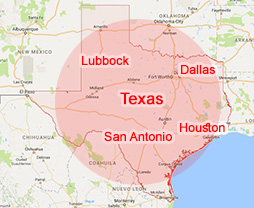5th Fifth Amendment Part 2
There is a trilogy of harts that we’ve seen but we need to start with those before we get to the good shit. And these deal with; these are 3 cases that deal with limitations on the federal exclusionary rule. The first is Hudson. And in summary it’s a 5/4 decision, the new majority Scalia writes for them, Kennedy is in the majority,” the swing vote” and he says,” we have never held that evidence is ‘fruit of the poisonous tree’ simply because it would not have come to light but for the illegal actions of the police.” we have never held the evidence as fruit of the poisonous tree simply because it would not have come to light but for the… what the shit have we been doing for the past 45 years!
Go figure. And Scalia goes on to say, “Look! The exclusionary rule has substantial cost. It allows the guilty to go free and the dangerous to remain at large” well, you know by the way Texas didn’t lose any time picking this right up! The mere fact of a constitutional violation that there was a bit-for cause for the discovery of evidence is no reason to apply the exclusionary rule.
3 years later, the screw tightens! And this is the Herring case. Herring versus US! And this time in a 5/4 decision, Kennedy voting with the majority as the swing vote. The opinion written by the chief justice! He cites Hudson for the proposition,” look supersession’s not an automatic criminal” ok, we got that part! Then he goes on to say, “The question turns on the culpability of the police and the potential of exclusion to deter wrongful police conduct.”
This cost benefit analysis. This balancing test! Always used to call this ‘the toilet bowl test’ anytime a judge says,” well, we’re going to apply the totality of the circumstances” you just, you can see the big toilet bowl in the sky, somebody pulling the chain and *prrrh* all your hopes and dreams like little brown things are going down the drain. This, this balancing test is; it must be sufficiently intentional ‘the police misconduct” to deter them from engaging in that conduct by excluding the evidence and it must be sufficiently culpable to justify the social cost. That’s a balancing test. Remember? What’s the social cost? Allowing the guilty to go free and the dangerous to remain at large! When are we going to at that balance. You know, I mean when we are going to ever win that cost benefit analysis? Texas courts didn’t lose much time picking up on hearing either. “Excluding the relevant incriminating evidence of appellant’s voluntary confession is too high a price to pay” Cost benefit analysis! 2 years later, the 3rd case in the trilogy of Harrs. And that’s Davis. The issue there was whether an officer had a right to rely on good faith on what he believed to be settled law. Remember the Leon was, the right to rely on warrant, this was settled case law.
And in this case the office testified that he relied on New York versus Belton. Remember, this is the bright line rule that, if you have a custodial traffic stop that the officer can search the entire passenger compartment and any containers there in but based upon a bright line rule he didn’t have to have a subjective fear that the officer’s safety was in danger that the individual was going to grab evidence that he or she would destroy. Then came Arizona versus Gant, they reevaluated that and they actually, Scalia asked the solicitor, she generally said; can you give me an example? By the way, Gant was handcuffed behind his back in the police car in the back seat with one of those cages that the door handles are off of it. And they asked well, if somebody’s handcuffed behind their back, there’s no door handles how many, can you site us an example of when they were able to break out of the police car. That they were locked in and they break into their car and grabbed the weapon or some evidence that want to destroy.
They couldn’t come up with one. So in Arizona versus Gant they went to a case by case analysis and they abandoned the bright line rule of New York versus Belton. But Davis came up between Belton and Arizona versus Gant. The officer claimed, “Well at the time I was relying on New York versus Belton! Well, Justice Alito says, “well look, when the police act within the objectively reasonable good faith believe that there conduct is lawful then exclusion does not pay its ways” Cost benefit analysis! Toilet bowl, you can hear it, you can feel it and you can watch it! ‘Cannot pay its pay’ what happened to the idea remember in Leon the origin of the ‘federal good faith’ exception was the idea; the preference for a warrant. Preference for a warrant practice! The idea was; we want to place a neutral detached magistrate between the citizen and those engage in often competitive enterprise of ferreting out crime.
One would, cannot imagine that would apply to an officer relying upon his interpretation of what settled case law is. Let me ask you something; does based on Davis, does that means we get to cross examine officers about what they believe the law was or is? Do they have to right? Can they just profess that they acted in good faith even if they were wrong that what they thought the law was? It just the Supreme Court you know, always the 5/4 on almost all these cases! They can agree on it! What settled case law the police officer could rely on! And by the way, so much for Scalia’s idea ‘we’ve never held evidence is excludable’ simply because the officers updated by violating your constitutional rights! In Davis, Alito makes it clear. What he says is,” We claim to acknowledge the exclusionary rule for what it undoubtedly is; a judicially creative remedy of the court’s own making. We abandoned the old, ‘reflexive application’ of the doctrine and imposed a more rigorous weighing of its costs and deterrence benefits” We recalibrated our cost benefit analysis in exclusion case to focus the inquiry on the flagrancy of the police misconduct. You know that means that, in order for your illegal police conduct to warrant application of federal exclusionary rule, the conduct has to be deliberate, it has to be culpable, and I guess it has to be flagrant just simply in order to obtain an order of suppression.
By the way, this is an 8 to 2 decision, Davis by the way. The only true descends against Ginsburg is Breyer. I don’t know where rather to women on the court wore that day. But its very interesting opinion never the less! Where this is push to limit or even eliminate the exclusionary as the remedy come from you? You’ve seen this before, but let me just tell you that, this is 1983 and this is the chief justice as we remember at his confirmation hearing, he said,” I’m just going to be an umpire. I’m just going to call the balls and strikes” This is when he was assistant council the president ‘John G Roberts’ he is forwarding a new study on the exclusionary rule and he says,” this study is highly useful in the campaign to amend or abolish the exclusionary rule” that’s not an umpire. That’s somebody with an agenda. And if you think I’m just picking on conservative republicans; how about our most recent appointee; Obama’s appointee of Elena Kagan the dean, former dean of the Harvard law school.
That’s same year 1983 she hadn’t even gone to law school yet, but she was on leave of absence from Princeton during her doctoral thesis at Oxford University in England. And her thesis said,” that development erosion of the American exclusionary rule; a study in judicial method” and what she says is that, “the exclusionary rule’s only consequences are to keep probative evidence from the trier of fact and to impair the truth finding function of criminal proceedings” and she hadn’t gone to law school yet and she hadn’t yet been the dean of Harvard law school or the solicitor general of the United States or on the supreme court. But never the less, but by the way she is right. I mean exclusionary rule only helps guilty people. I mean if you don’t have any shit that you’re caught with, there’s nothing to suppress. So I mean technically, she’s right. But it’s kind of a scary concept when we have, court members on both sides of the spectrum, at least raising doubts about the application of the exclusionary rule.






